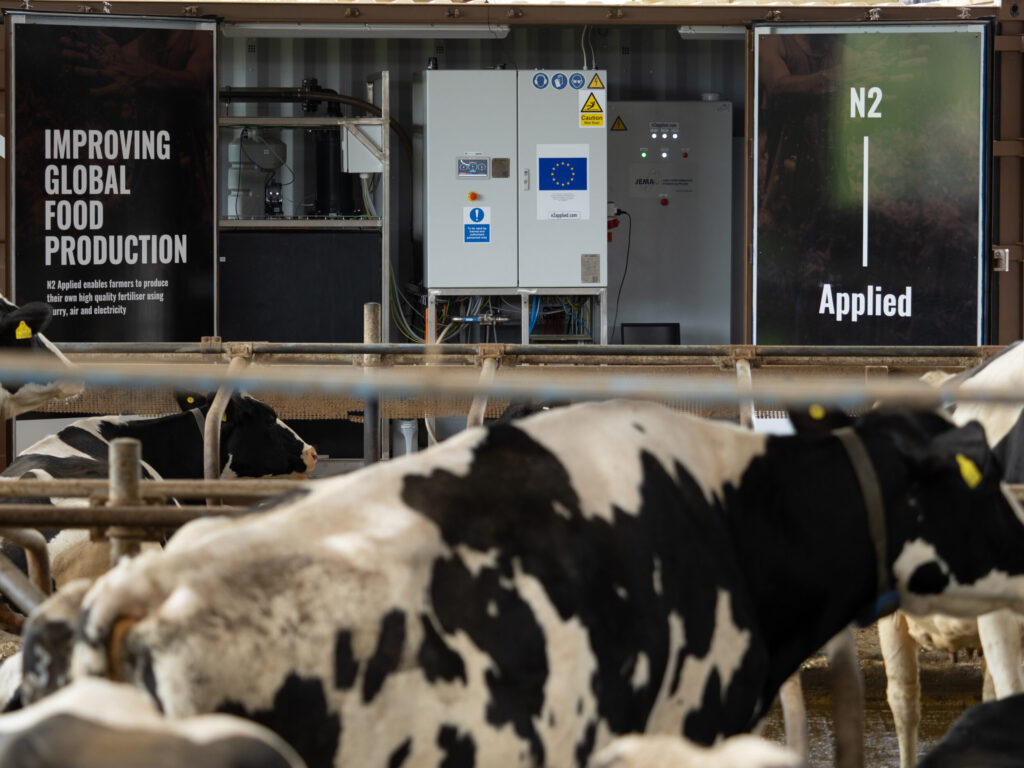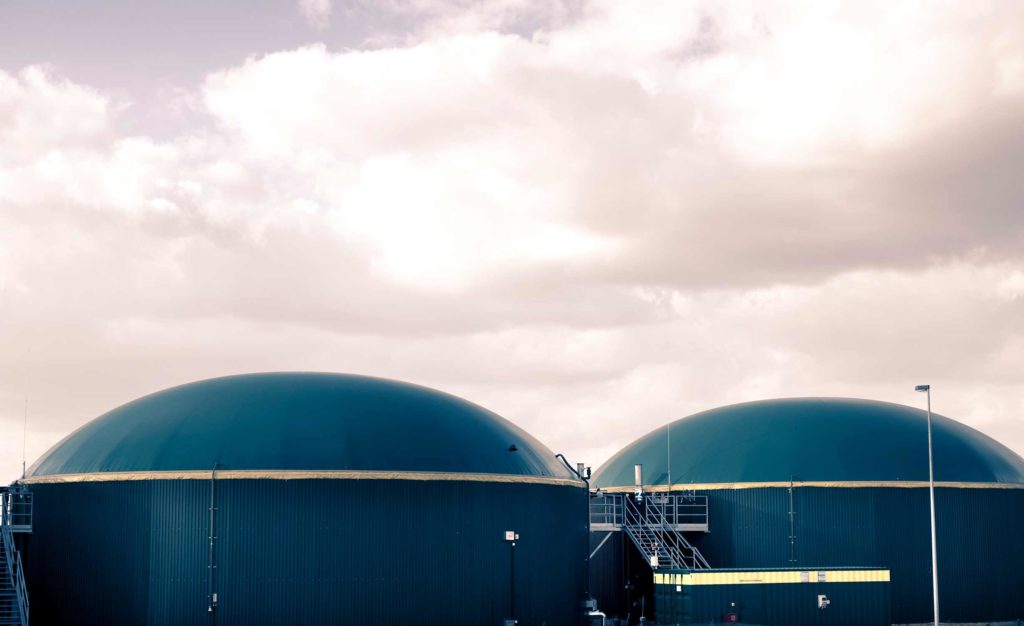APPLICATION
LIVESTOCK FARMING
Livestock slurry is a natural fertiliser containing all the nutrients required for plant growth. However, the nitrogen content is too low for the optimum fertilisation of most crops, which is amplified when slurry loses vast amounts of ammonia (NH3) during storage and application. Livestock farming is also considered a major source of greenhouse gas emissions, particularly methane (CH4), and the sector is under pressure from consumers, governments and NGO’s to decarbonise.
When livestock slurry is treated by the N2 Unit the loss of ammonia is prevented and methane emissions are eliminated. In addition, more nitrogen directly captured from air is added, commonly doubling the nitrogen content which is vital for plant growth. The result is a stable fertiliser that holds a higher nitrogen content for farmers to use, whilst delivering a significant carbon footprint reduction and improved air quality, which benefits society and allows the wider supply chain to meet it’s sustainability commitments.


BIOGAS
Biogas plants (anaerobic digesters) process organic waste such as manure or animal slurry, food waste from domestic, commercial and industrial sources, and sewage sludge, to produce a methane rich gas and a digestate which is typically considered a biproduct or waste.
However, the nutrient value of the digestate can be significantly improved by treating it through the N2 Unit. Commonly a doubling effect occurs making treated digestate (NEO) a stable, high nitrogen fertiliser.
For operators of biogas plants, securing an outlet for digestate is important to potentially avoid gate fees and maximize the output of the biogas plant. N2’s technology enables biogas plants to produce high quality nitrogen fertiliser from digestate utilising the energy produced locally and enhancing the overall value creation of the biogas plant.